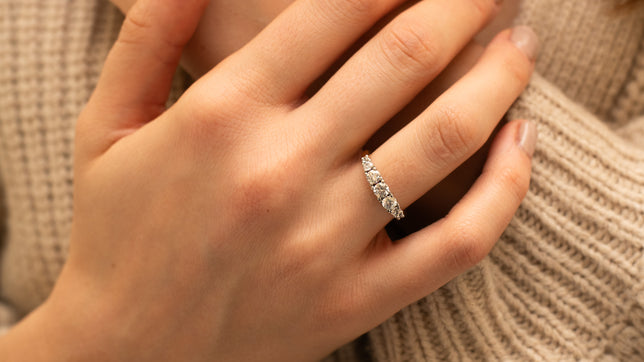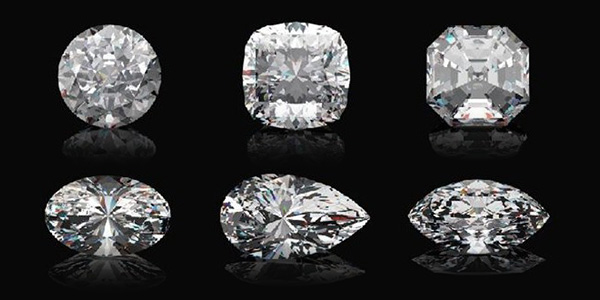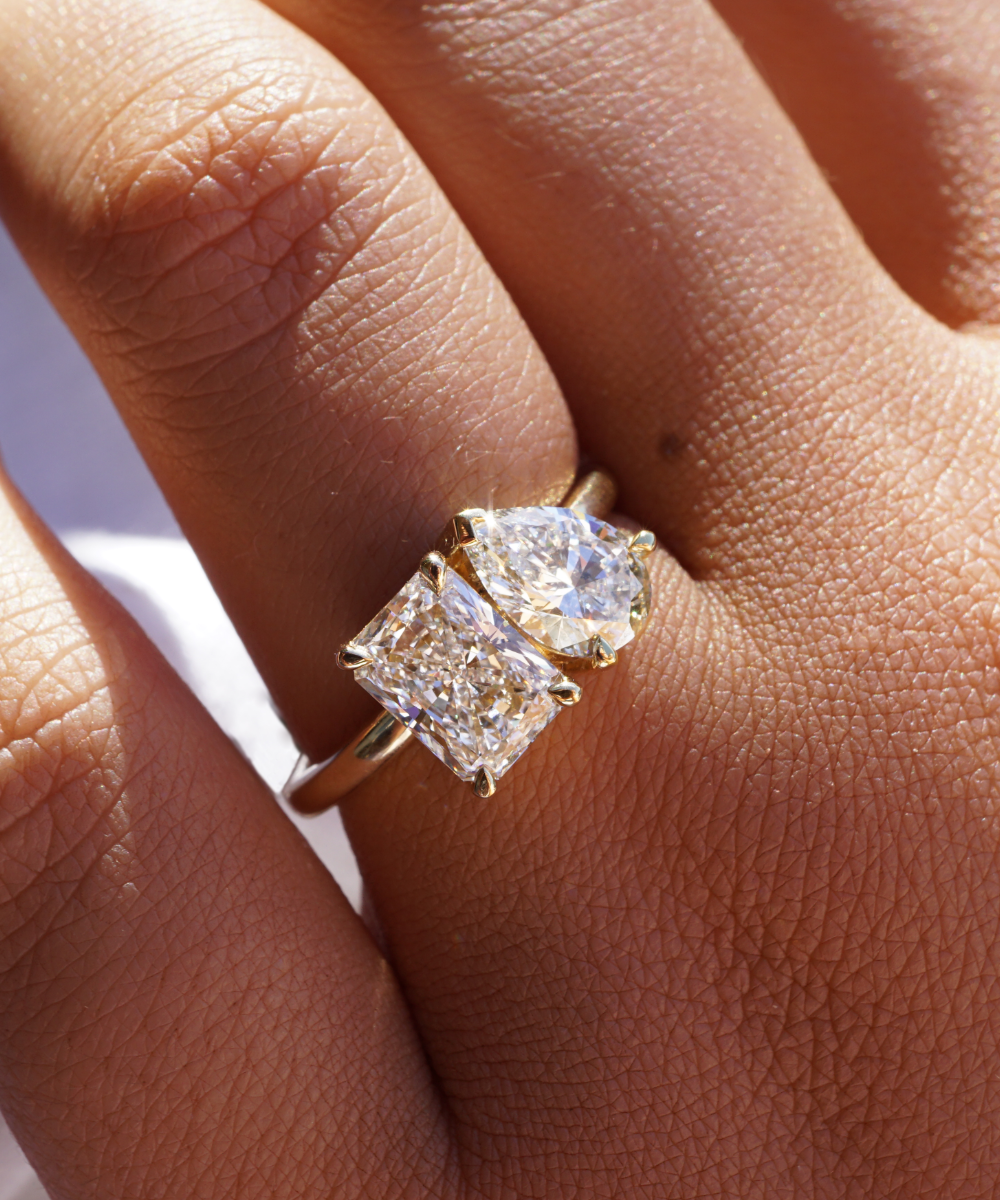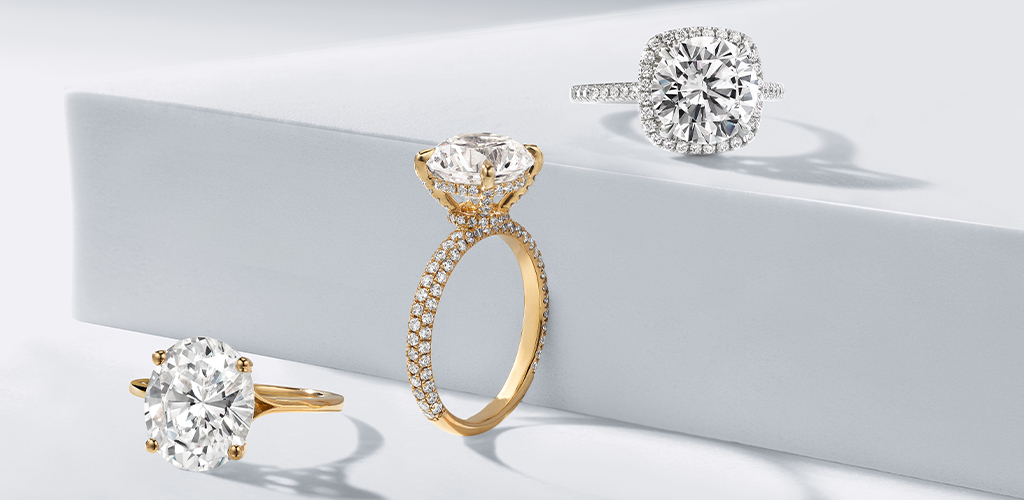
What Are Lab-Grown Diamonds?
Lab-grown diamonds, also known as synthetic or cultured diamonds, are produced in controlled laboratory environments that replicate the natural diamond-growing process. They possess the same chemical composition and physical properties as mined diamonds, differing only in origin. These gems are grown using advanced technological processes that mimic the intense heat and pressure found deep within the Earth’s mantle.
Chemical Composition and Structure
Lab-grown diamonds are composed of carbon atoms arranged in the crystal structure characteristic of diamonds. This ensures they exhibit identical brilliance and durability to natural diamonds, making them indistinguishable to the naked eye.
Environmental Benefits Compared to Mined Diamonds
Unlike traditional mined diamonds, lab grown diamond engagement ring have a significantly lower environmental impact. Their production consumes less energy and generates fewer greenhouse gas emissions. This eco-friendly aspect appeals to environmentally conscious consumers seeking sustainable alternatives.
Quality and Durability of Lab-Grown Diamonds
Lab-grown diamonds undergo rigorous testing and certification processes to ensure their quality and authenticity. They are graded using the same criteria as natural diamonds, including cut, color, clarity, and carat weight. Independent gemological institutes provide certifications that validate the gem’s characteristics and origin.
Comparison with Natural Diamonds
In terms of durability and brilliance, lab-grown diamonds are on par with natural diamonds. They exhibit the same hardness on the Mohs scale and possess exceptional fire and sparkle, making them ideal for engagement rings that symbolize enduring love and commitment.
Certification Standards
Reputable manufacturers adhere to strict certification standards to guarantee the quality and ethical sourcing of lab-grown diamonds. Certificates from recognized laboratories such as the Gemological Institute of America (GIA) provide consumers with confidence in their purchase.
Cost Considerations
One of the most compelling reasons to choose a lab-grown diamond engagement ring is its affordability compared to natural diamonds. On average, lab-grown diamonds cost 20-40% less than mined diamonds of similar quality. This price advantage allows couples to invest in a larger or more intricately designed ring without compromising on quality.
Affordability Compared to Natural Diamonds
The lower production costs associated with lab-grown diamonds contribute to their competitive pricing. This accessibility democratizes the luxury of owning a diamond engagement ring, making it attainable for a broader audience.
Factors Influencing Pricing
Several factors influence the pricing of lab-grown diamonds, including size, color, clarity, and cut. Understanding these variables can help buyers make informed decisions based on their preferences and budget constraints.
Ethical and Social Impact
Lab-grown diamonds are sourced ethically and responsibly, free from the ethical concerns associated with traditional diamond mining. They contribute to sustainable practices and support local communities by promoting fair labor conditions and minimizing environmental degradation.
Conflict-Free Sourcing
Unlike natural diamonds, which may be associated with conflicts in diamond-producing regions, lab-grown diamonds are conflict-free. Their production process ensures transparency and accountability in the supply chain, offering peace of mind to conscientious consumers.
Community Impact and Corporate Responsibility
Leading manufacturers of lab-grown diamonds prioritize corporate social responsibility initiatives. They invest in community development projects and uphold ethical labor practices, fostering positive social impact across the diamond industry.
Customization Options
Choosing a lab-grown diamond engagement ring allows couples to explore a myriad of customization options tailored to their unique preferences and styles. From classic solitaires to intricate halo designs, the flexibility in design ensures every ring is a personalized symbol of love.
Design Flexibility
Jewelers specializing in lab grown diamonds offer extensive customization options, including choice of metal settings, diamond shapes, and accents. This versatility enables couples to create a ring that reflects their individuality and relationship story.
Popular Settings and Styles
Trends in engagement ring styles evolve with contemporary preferences. Popular choices among buyers of lab-grown diamond rings include vintage-inspired designs, minimalist settings, and eco-friendly ring bands crafted from recycled metals.
Longevity and Maintenance
A lab-grown diamond engagement ring is designed to withstand the test of time, symbolizing enduring love and commitment. Proper care and maintenance ensure the diamond retains its brilliance and sparkle throughout generations.
Care Tips for Lab-Grown Diamond Rings
Routine maintenance, such as regular cleaning and professional inspections, helps preserve the diamond’s luster and integrity. Avoid exposing the ring to harsh chemicals or abrasive materials that may affect its appearance or durability.
Durability Over Time
Lab-grown diamonds are exceptionally durable and resistant to scratches and abrasions, making them suitable for everyday wear. Their hardness ensures they maintain their pristine condition, symbolizing the enduring nature of love.
Perceived Value in the Market
The increasing popularity of lab-grown diamond engagement rings reflects shifting consumer preferences and evolving perceptions of value in the jewelry market. Modern couples prioritize sustainability and ethical considerations when choosing a symbol of their commitment.
Consumer Perceptions and Trends
Millennial and Gen Z consumers, in particular, value transparency and sustainability in their purchasing decisions. The affordability and ethical sourcing of lab-grown diamonds resonate with these conscientious buyers seeking meaningful alternatives to traditional diamonds.
Economic Factors Influencing Demand
Market dynamics, including fluctuating natural diamond prices and increased awareness of environmental issues, drive demand for lab-grown diamond engagement rings. Their competitive pricing and positive environmental footprint position them as a compelling choice in the luxury jewelry segment.
Buying Guide: How to Choose the Right Lab-Grown Diamond Ring
Selecting the perfect lab-grown diamond engagement ring involves considering several factors to ensure it aligns with your preferences and budget. Understanding the key aspects of diamond quality and reputable retailers can simplify the decision-making process.
Factors to Consider Before Purchasing
Evaluate the diamond’s cut, color, clarity, and carat weight to determine its overall quality and visual appeal. Set a budget that accommodates your desired specifications while exploring customization options that reflect your personal style.
Tips for Selecting a Reputable Retailer
Choose a retailer with a proven track record of ethical sourcing and transparent business practices. Look for certifications from recognized gemological laboratories and read customer reviews to gauge satisfaction and reliability.
Celebrity Endorsements and Popularity
The endorsement of lab-grown diamond engagement rings by celebrities and influencers has propelled their mainstream acceptance and popularity. High-profile engagements featuring these sustainable gems have sparked conversations about ethical jewelry choices.
Influence on Mainstream Acceptance
Celebrities opting for lab-grown diamond engagement rings have influenced consumer perceptions and normalized their presence in the luxury market. Their public endorsements highlight the beauty and significance of lab-grown diamonds as symbols of commitment and style.
Celebrity Engagement Ring Choices
Notable figures across entertainment, sports, and fashion industries have chosen lab-grown diamonds for their engagement rings, showcasing diverse styles and designs that resonate with contemporary trends.
Misconceptions About Lab-Grown Diamonds
Despite their growing popularity, lab-grown diamonds are subject to several misconceptions that can mislead potential buyers. Addressing these myths can clarify their true value and dispel any doubts about their authenticity and quality.
Common Myths Debunked
Misconceptions such as lab-grown diamonds being inferior in quality or lacking uniqueness compared to natural diamonds are unfounded. Scientific advancements ensure lab-grown diamonds exhibit the same brilliance and durability as mined diamonds.





